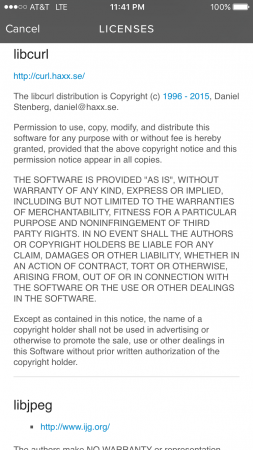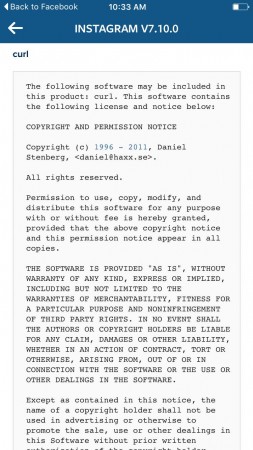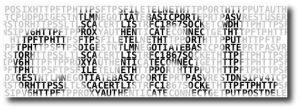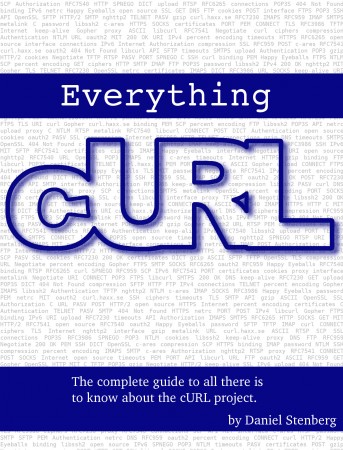My first HTTP/2 talk of the year I did for OWASP Stockholm on January 27th, and I subsequently updated my public slide set:
All posts by Daniel Stenberg
“Subject: Urgent Warning”
Back in December I got a desperate email from this person. A woman who said her Instagram had been hacked and since she found my contact info in the app she mailed me and asked for help. I of course replied and said that I have nothing to do with her being hacked but I also have nothing to do with Instagram other than that they use software I’ve written.
Today she writes back. Clearly not convinced I told the truth before, and now she strikes back with more “evidence” of my wrongdoings.
Dear Daniel,
I had emailed you a couple months ago about my “screen dumps” aka screenshots and asked for your help with restoring my Instagram account since it had been hacked, my photos changed, and your name was included in the coding. You claimed to have no involvement whatsoever in developing a third party app for Instagram and could not help me salvage my original Instagram photos, pre-hacked, despite Instagram serving as my Photography portfolio and my career is a Photographer.
Since you weren’t aware that your name was attached to Instagram related hacking code, I thought you might want to know, in case you weren’t already aware, that your name is also included in Spotify terms and conditions. I came across this information using my Spotify which has also been hacked into and would love your help hacking out of Spotify. Also, I have yet to figure out how to unhack the hackers from my Instagram so if you change your mind and want to restore my Instagram to its original form as well as help me secure my account from future privacy breaches, I’d be extremely grateful. As you know, changing my passwords did nothing to resolve the problem. Please keep in mind that Facebook owns Instagram and these are big companies that you likely don’t want to have a trail of evidence that you are a part of an Instagram and Spotify hacking ring. Also, Spotify is a major partner of Spotify so you are likely familiar with the coding for all of these illegally developed third party apps. I’d be grateful for your help fixing this error immediately.
Thank you,
[name redacted]
P.S. Please see attached screen dump for a screen shot of your contact info included in Spotify (or what more likely seems to be a hacked Spotify developed illegally by a third party).
Here’s the Instagram screenshot she sent me in a previous email:
I’ve tried to respond with calm and clear reasonable logic and technical details on why she’s seeing my name there. That clearly failed. What do I try next?
Two years of Mozilla
Today marks my two year anniversary of being employed by one of the greatest companies I’m aware of.
I get to work with open source all day, every day. I get to work for a company that isn’t driven by handing over profits to its owners for some sort of return on investment. I get to work on curl as part of my job. I get to work with internetworking, which is awesomely fun, hard, thrilling and hair-tearing all at once. I get to work with protocol standards like within the IETF and my employer can let me go to meetings. In the struggle for good, against evil and for the users of the world, I think I’m on the right side. For users, for privacy, for openness, for inclusiveness. I feel I’m a mozillian now.
So what did I achieve during my first two years with the dinosaur logo company? Not nearly enough of what I’ve wanted or possibly initially thought I would. I’ve faced a lot of tough bugs and hard challenges and I’ve landed and backed out changes all through-out this period. But I like to think that it is a net gain and even when running head first into a wall, that can be educational and we can learn from it and then when we take a few steps back and race forwards again we can use that knowledge and make better decision for the future.
Future you say? Yeah, I’m heading on in the same style, without raising my focus point very much and continuously looking for my next thing very close in time. I grab issues to work on with as little foresight as possible but I completely assume they will continue to be tough nuts to crack and there will be new networking issues to conquer going forward as well. I’ll keep working on open source, open standards and a better internet for users. I really enjoy working for Mozilla!
Tales from my inbox, part++
“Josh” sent me an email. Pardon the language here but I decided to show the mail body unaltered:
From: Josh Yanez <a gmail address> Date: Wed, 6 Jan 2016 22:27:13 -0800 To: daniel Subject: Hey fucker I got all your fucking info either you turn yourself in or ill show it to the police. You think I'm playing try me I got all your stupid little coding too. Sent from my iPhone
This generates so many questions
- I’ve had threats mailed to be before (even done over phone) so this is far from the first time. The few times I’ve bothered to actually try to understand what these people are hallucinating about, it usually turns out that they’ve discovered that someone has hacked them or targeted them in some sort of attack and curl was used and I am the main author so I’m the bad guy.
- He has all my “info” and my “stupid little coding too” ? What “coding” could that be? What is all my info?
- Is this just a spam somehow that wants me to reply? It is directed to me only and I’ve not heard of anyone else who got a mail similar to this.
- The lovely “Sent from my iPhone” signature is sort of hilarious too after such an offensive message.
Very aware this could just as well suck me into a deep and dark hole of sadness, I was just too curious to resist so I responded. Unfortunately I didn’t get anything further back so the story thus ends here, a bit abrupt. 🙁
HTTP/2 adoption, end of 2015
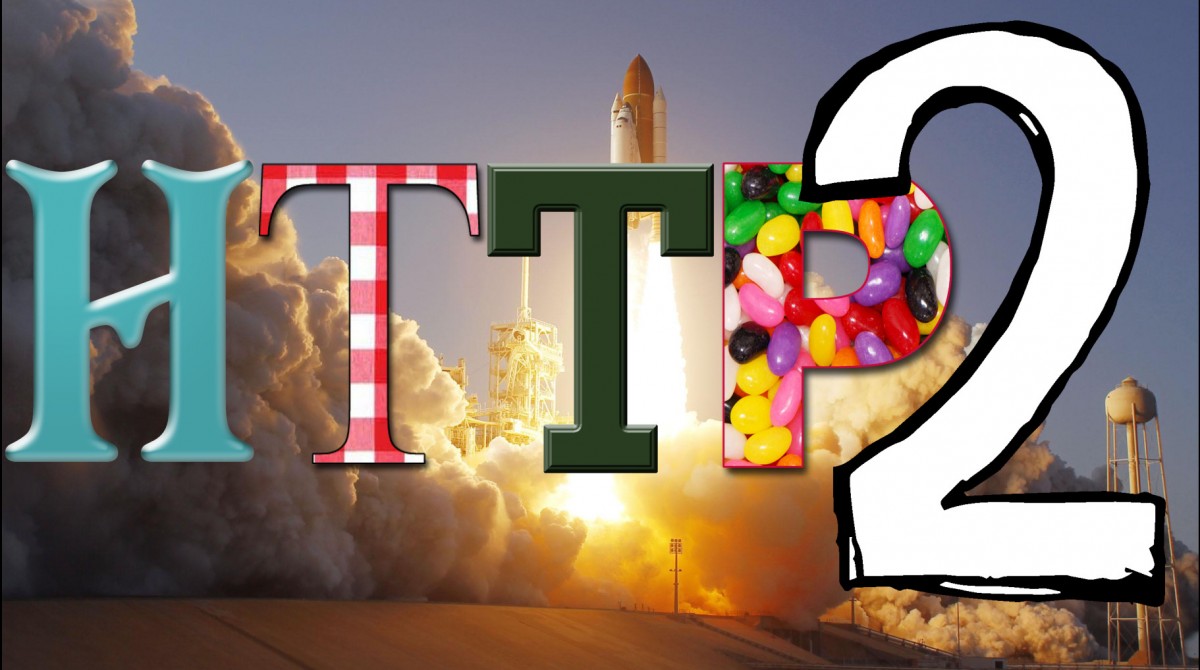 When I asked my surrounding in March 2015 to guess the expected HTTP/2 adoption by now, we as a group ended up with about 10%. OK, the question was vaguely phrased and what does it really mean? Let’s take a look at some aspects of where we are now.
When I asked my surrounding in March 2015 to guess the expected HTTP/2 adoption by now, we as a group ended up with about 10%. OK, the question was vaguely phrased and what does it really mean? Let’s take a look at some aspects of where we are now.
Perhaps the biggest flaw in the question was that it didn’t specify HTTPS. All the browsers of today only implement HTTP/2 over HTTPS so of course if every HTTPS site in the world would support HTTP/2 that would still be far away from all the HTTP requests. Admittedly, browsers aren’t the only HTTP clients…
During the fall of 2015, both nginx and Apache shipped release versions with HTTP/2 support. nginx made it slightly harder for people by forcing users to select either SPDY or HTTP/2 (which was a technical choice done by them, not really enforced by the protocols) and also still telling users that SPDY is the safer choice.
Let’s Encrypt‘s finally launching their public beta in the early December also helps HTTP/2 by removing one of the most annoying HTTPS obstacles: the cost and manual administration of server certs.
Amount of Firefox responses
This is the easiest metric since Mozilla offers public access to the metric data. It is skewed since it is opt-in data and we know that certain kinds of users are less likely to enable this (if you’re more privacy aware or if you’re using it in enterprise environments for example). This also then measures the share by volume of requests; making the popular sites get more weight.
Firefox 43 counts no less than 22% of all HTTP responses as HTTP/2 (based on data from Dec 8 to Dec 16, 2015).
Out of all HTTP traffic Firefox 43 generates, about 63% is HTTPS which then makes almost 35% of all Firefox HTTPS requests are HTTP/2!
Firefox 43 is also negotiating HTTP/2 four times as often as it ends up with SPDY.
Amount of browser traffic
One estimate of how large share of browsers that supports HTTP/2 is the caniuse.com number. Roughly 70% on a global level. Another metric is the one published by KeyCDN at the end of October 2015. When they enabled HTTP/2 by default for their HTTPS customers world wide, the average number of users negotiating HTTP/2 turned out to be 51%. More than half!
Cloudflare however, claims the share of supported browsers are at a mere 26%. That’s a really big difference and I personally don’t buy their numbers as they’re way too negative and give some popular browsers very small market share. For example: Chrome 41 – 49 at a mere 15% of the world market, really?
I think the key is rather that it all boils down to what you measure – as always.
Amount of the top-sites in the world
Netcraft bundles SPDY with HTTP/2 in their October report, but it says that “29% of SSL sites within the thousand most popular sites currently support SPDY or HTTP/2, while 8% of those within the top million sites do.” (note the “of SSL sites” in there)
That’s now slightly old data that came out almost exactly when Apache first release its HTTP/2 support in a public release and Nginx hadn’t even had it for a full month yet.
Facebook eventually enabled HTTP/2 in November 2015.
Amount of “regular” sites
There’s still no ideal service that scans a larger portion of the Internet to measure adoption level. The httparchive.org site is about to change to a chrome-based spider (from IE) and once that goes live I hope that we will get better data.
W3Tech’s report says 2.5% of web sites in early December – less than SPDY!
I like how isthewebhttp2yet.com looks so far and I’ve provided them with my personal opinions and feedback on what I think they should do to make that the preferred site for this sort of data.
Using the shodan search engine, we could see that mid December 2015 there were about 115,000 servers on the Internet using HTTP/2. That’s 20,000 (~24%) more than isthewebhttp2yet site says. It doesn’t really show percentages there, but it could be interpreted to say that slightly over 6% of HTTP/1.1 sites also support HTTP/2.
On Dec 3rd 2015, Cloudflare enabled HTTP/2 for all its customers and they claimed they doubled the number of HTTP/2 servers on the net in that single move. (The shodan numbers seem to disagree with that statement.)
Amount of system lib support
iOS 9 supports HTTP/2 in its native HTTP library. That’s so far the leader of HTTP/2 in system libraries department. Does Mac OS X have something similar?
I had expected Window’s wininet or other HTTP libs to be up there as well but I can’t find any details online about it. I hear the Android HTTP libs are not up to snuff either but since okhttp is now part of Android to some extent, I guess proper HTTP/2 in Android is not too far away?
Amount of HTTP API support
I hear very little about HTTP API providers accepting HTTP/2 in addition or even instead of HTTP/1.1. My perception is that this is basically not happening at all yet.
Next-gen experiments
If you’re using a modern Chrome browser today against a Google service you’re already (mostly) using QUIC instead of HTTP/2, thus you aren’t really adding to the HTTP/2 client side numbers but you’re also not adding to the HTTP/1.1 numbers.
QUIC and other QUIC-like (UDP-based with the entire stack in user space) protocols are destined to grow and get used even more as we go forward. I’m convinced of this.
Conclusion
Everyone was right! It is mostly a matter of what you meant and how to measure it.
Future
Recall the words on the Chromium blog: “We plan to remove support for SPDY in early 2016“. For Firefox we haven’t said anything that absolute, but I doubt that Firefox will support SPDY for very long after Chrome drops it.
A 2015 retrospective
Wow, another year has passed. Summing up some things I did this year.
Commits
I don’t really have good global commit count for the year, but github counts 1300 commits and I believe the vast majority of my commits are hosted there. Most of them in curl and curl-oriented projects.
We did 8 curl releases during the year featuring a total of 575 bug fixes. The almost 1,200 commits were authored by 107 different individuals.
Books
I continued working on http2 explained during the year, and after having changed to markdown format it is now available in more languages than ever thanks to our awesome translators!
I started my second book project in the fall of 2015, using the working title everything curl, which is a much larger book effort than the HTTP/2 book and after having just passed 23,500 words that create over 110 pages in the PDF version, almost half of the planned sections are still left to write…
I almost doubled my number of twitter followers during this year, now at 2,850 something. While this is a pointless number, reaching out slightly further does have the advantage that I get better responses and that makes me appreciate and get more out of twitter.
Stackoverflow
I’ve continued to respond to questions there, and my total count is now at 550 answers, out of which I wrote about 80 this year. The top scored answer I wrote during 2015 is for a question that isn’t phrased like one: Apache and HTTP2.
Keyboard use
I’ve pressed a bit over 6.4 million keys on my primary keyboard during the year, and 10.7% of the keys were pressed on weekends.
During the 2900+ hours when at least one key press were registered, I averaged on 2206 key presses per hour.
The most excessive key banging hour of the year started September 21 at 14:00 and ended with me reaching 10,875 key presses.
The most excessive day was June 9, during which I pushed 63,757 keys.
Talks
This is all the 16 opportunities where I’ve talked in front of an audience during 2015. As you will see, the list of topics were fairly limited…
- HTTP/2 at FOSDEM February 1st, Brussels
- curl in embedded devices at FOSDEM February 1st, Brussels
- practical uses of curl and TLS, at Mera Krypto, March 5 Stockholm
- curl and TLS at Mera Krypto, April 29th Stockholm
- HTTP/2 for TCP/IP Geeks Stockholm, May 6th Stockholm
- (non-public event) curl, for [name redacted] May 21st in Stockholm
- curl – a hobby project with a billions users at Google Tech Talk, August 26th in Stockholm, Sweden
- HTTP/2 with curl, foss-sthlm on June 4th in Stockholm
- (non-public event) HTTP/2 for [rename redacted] September 10th, in Stockholm, Sweden
- HTTP/2, at the GOTO conference on October 2nd in Copenhagen, Denmark
- More HTTP/2, at Apachecon on October 6th in Budapest, Hungary
- HTTP/2 vs HTTP/1.1, at the Velocity conference on October 13th in New York, USA
- HTTP/2 at the Øredev conference, November 3rd, Malmö, Sweden
- curl -one hobby, a billion users at the Øredev conference, November 3rd, Malmö, Sweden
- HTTP/2 for OWASP, November 12th Stockholm
- HTTP/2 for Pensionsmyndigheten. November 30th, Stockholm
curl and HTTP/2 by default
Followers of this blog know that I’ve dabbled with HTTP/2 stuff for quite some time, and curl got its initial support for the new protocol version already in September 2013.
curl shipped “proper” HTTP/2 support as it looks in the final specification both for the command line tool and the libcurl library before any browsers did in their release versions. (Firefox was the first browser to ship HTTP/2 in a release version, followed by Chrome. Both did this in the beginning of 2015.)
libcurl features an option that lets the application to select HTTP version to use, and that includes HTTP/2 since back then. The command line tool got a corresponding command line option (aptly named –http2) to switch on this protocol version.
This goes hand in hand with curl’s general philosophy that it just does the basics and you have to specifically switch on more features and tell it to enable things you want to use. This conservative approach makes it very reliable protocol-wise and provides applications a very large level of control. The downside is of course that fewer people switch on certain features since they’re just not aware of them. Or as in this case with HTTP/2, it also complicates matters that only a subset of users still have a HTTP/2 tool and library since they might still run outdated versions or they may run recent versions that were built without the necessary prerequisites present (basically the nghttp2 library).
By default?
libcurl is even more conservative that the curl tool so switching default for the library isn’t really on the agenda yet. We are very careful of modifying behavior so we’re saving that for later but what about upping the curl tool a notch?
We could switch the default to use HTTP/2 as soon as the tool has the powers built-in. But for regular clear text HTTP, using the Upgrade: header has a few drawbacks. It makes the requests larger, it complicates matter somewhat that most servers don’t do upgrades on HTTP POST requests (and a few others) so there might indeed be several requests before an upgrade is actually made even on a server that supports HTTP/2 and perhaps the strongest reason: we already found servers that (wrongly, I would claim) reject requests with Upgrade: headers they don’t understand. All this taken together, Upgrade over HTTP will break too many requests that work with HTTP 1.1. And then we haven’t even considered how the breakage situation will be when using explicit or transparent proxies…
By default!
To help users with this problem of HTTP upgrades not being feasible by default, we’ve just landed a new alternative to the “set HTTP version” that only sets HTTP/2 for HTTPS requests and leaves it to HTTP/1.1 for clear text HTTP requests. This option will ship in the next release, to be called 7.47.0, and can of course be tested out before that with git or daily snapshot builds.
Setting this option is next to risk-free, as the HTTP/2 negotiation in TLS is based on one or two TLS extensions (NPN and ALPN) that both have proper fallbacks to 1.1.
Said and done. The curl tool now sets this option. Using the curl tool on a HTTPS:// URL will from now on use HTTP/2 by default as soon as both the libcurl it uses and the server it connects to support HTTP/2!
We will of course keep our eyes and ears open to see if this causes any problems. Let us know what you see!
Hosting RMS again!
I’m thrilled to once again have to honor to organize a lecture and talk in Stockholm by the legendary RMS himself. (Remember the last time?)
On January 25 2016, RMS will talk about “For a Free Digital Society” in the large Aula Magna room at Stockholm University that seats almost 1200 persons.
See http://www.foss-sthlm.se/rms2016.html for the full invitation and sign-up. Registration is voluntary, but it helps us understand the interest and size of the audience.
 Photo by Kjell Ericson, taken just before the event started the last time.
Photo by Kjell Ericson, taken just before the event started the last time.
Everything curl – work in progress
… is a book I’m slowly working on. Click the image above to see it in its current state. It is not complete.
As the title should hint, I intend to cover just about everything that is to say about curl. The project, the products, the development, the source code, its history, its future, the policies, the ideas and whatever else that I can think of has anything to do with curl.
The book is completely open and available for free – in a variety of formats. When I write this, there are about 60 pages and almost 13,000 words written. There are 220+ sections or sub chapters planned (so far) out of which 111 are still to be written. Of course that doesn’t really mean that the 115 already written ones are complete or without flaws that need to be corrected. I also suspect I’ve written the easiest ones first…
I welcome and encourage all the help I can get. The source is all written in markdown, and everything is on github. File issues, send pull-requests or whatever you can think of!
I’m especially interested in getting suggestions for new sections that I haven’t yet thought about. Or sub sections, or examples. Or some fun stories from the wild Internet that you overcame with the help of curl. Or suggestions on where we should insert images (and what images to insert). Or other artworks, like a nicer cover. Anything!
If things go as planned, I have filled in most of the blanks by the summer 2016 and can then offer the complete curl book.
What’s new in curl
 We just shipped our 150th public release of curl. On December 2, 2015.
We just shipped our 150th public release of curl. On December 2, 2015.
curl 7.46.0
One hundred and fifty public releases done during almost 18 years makes a little more than 8 releases per year on average. In mid November 2015 we also surpassed 20,000 commits in the git source code repository.
With the constant and never-ending release train concept of just another release every 8 weeks that we’re using, no release is ever the grand big next release with lots of bells and whistles. Instead we just add a bunch of things, fix a bunch of bugs, release and then loop. With no fanfare and without any press-stopping marketing events.
So, instead of just looking at what was made in this last release, because you can check that out yourself in our changelog, I wanted to take a look at the last two years and have a moment to show you want we have done in this period. curl and libcurl are the sort of tool and library that people use for a long time and a large number of users have versions installed that are far older than two years and hey, now I’d like to tease you and tell you what can be yours if you take the step straight into the modern day curl or libcurl.
Thanks
Before we dive into the real contents, let’s not fool ourselves and think that we managed these years and all these changes without the tireless efforts and contributions from hundreds of awesome hackers. Thank you everyone! I keep calling myself lead developer of curl but it truly would not not exist without all the help I get.
We keep getting a steady stream of new contributors and quality patches. Our problem is rather to review and receive the contributions in a timely manner. In a personal view, I would also like to just add that during these two last years I’ve had support from my awesome employer Mozilla that allows me to spend a part of my work hours on curl.
What happened the last 2 years in curl?
We released curl and libcurl 7.34.0 on December 17th 2013 (12 releases ago). What did we do since then that could be worth mentioning? Well, a lot, and then I’m going to mostly skip the almost 900 bug fixes we did in this time.
Many security fixes
Almost half (18 out of 37) of the security vulnerabilities reported for our project were reported during the last two years. It may suggest a greater focus and more attention put on those details by users and developers. Security reports are a good thing, it means that we address and find problems. Yes it unfortunately also shows that we introduce security issues at times, but I consider that secondary, even if we of course also work on ways to make sure we’ll do this less in the future.
URL specific options: –next
A pretty major feature that was added to the command line tool without much bang or whistles. You can now add –next as a separator on the command line to “group” options for specific URLs. This allows you to run multiple different requests on URLs that still can re-use the same connection and so on. It opens up for lots of more fun and creative uses of curl and has in fact been requested on and off for the project’s entire life time!
HTTP/2
There’s a new protocol version in town and during the last two years it was finalized and its RFC went public. curl and libcurl supports HTTP/2, although you need to explicitly ask for it to be used still.
HTTP/2 is binary, multiplexed, uses compressed headers and offers server push. Since the command line tool is still serially sending and receiving data, the multiplexing and server push features can right now only get fully utilized by applications that use libcurl directly.
HTTP/2 in curl is powered by the nghttp2 library and it requires a fairly new TLS library that supports the ALPN extension to be fully usable for HTTPS. Since the browsers only support HTTP/2 over HTTPS, most HTTP/2 in the wild so far is done over HTTPS.
We’ve gradually implemented and provided more and more HTTP/2 features.
Separate proxy headers
For a very long time, there was no way to tell curl which custom headers to use when talking to a proxy and which to use when talking to the server. You’d just add a custom header to the request. This was never good and we eventually made it possible to specify them separately and then after the security alert on the same thing, we made it the default behavior.
Option man pages
We’ve had two user surveys as we now try to make it an annual spring tradition for the project. To learn what people use, what people think, what people miss etc. Both surveys have told us users think our documentation needs improvement and there has since been an extra push towards improving the documentation to make it more accessible and more readable.
One way to do that, has been to introduce separate, stand-alone, versions of man pages for each and very libcurl option. For the functions curl_easy_setopt, curl_multi_setopt and curl_easy_getinfo. Right now, that means 278 new man pages that are easier to link directly to, easier to search for with Google etc and they are now written with more text and more details for each individual option. In total, we now host and maintain 351 individual man pages.
The boringssl / libressl saga
The Heartbleed incident of April 2014 was a direct reason for libressl being created as a new fork of OpenSSL and I believe it also helped BoringSSL to find even more motivation for its existence.
Subsequently, libcurl can be built to use either one of these three forks based on the same origin. This is however not accomplished without some amount of agony.
SSLv3 is also disabled by default
The continued number of problems detected in SSLv3 finally made it too get disabled by default in curl (together with SSLv2 which has been disabled by default for a while already). Now users need to explicitly ask for it in case they need it, and in some cases the TLS libraries do not even support them anymore. You may need to build your own binary to get the support back.
Everyone should move up to TLS 1.2 as soon as possible. HTTP/2 also requires TLS 1.2 or later when used over HTTPS.
support for the SMB/CIFS protocol
For the first time in many years we’ve introduced support for a new protocol, using the SMB:// and SMBS:// schemes. Maybe not the most requested feature out there, but it is another network protocol for transfers…
code of conduct
Triggered by several bad examples in other projects, we merged a code of conduct document into our source tree without much of a discussion, because this is the way this project always worked. This just makes it clear to newbies and outsiders in case there would ever be any doubt. Plus it offers a clear text saying what’s acceptable or not in case we’d ever come to a point where that’s needed. We’ve never needed it so far in the project’s very long history.
–data-raw
Just a tiny change but more a symbol of the many small changes and advances we continue doing. The –data option that is used to specify what to POST to a server can take a leading ‘@’ symbol and then a file name, but that also makes it tricky to actually send a literal ‘@’ plus it makes scripts etc forced to make sure it doesn’t slip in one etc.
–data-raw was introduced to only accept a string to send, without any ability to read from a file and not using ‘@’ for anything. If you include a ‘@’ in that string, it will be sent verbatim.
attempting VTLS as a lib
We support eleven different TLS libraries in the curl project – that is probably more than all other transfer libraries in existence do. The way we do this is by providing an internal API for TLS backends, and we call that ‘vtls’.
In 2015 we started made an effort in trying to make that into its own sub project to allow other open source projects and tools to use it. We managed to find a few hackers from the wget project also interested and to participate. Unfortunately I didn’t feel I could put enough effort or time into it to drive it forward much and while there was some initial work done by others it soon was obvious it wouldn’t go anywhere and we pulled the plug.
The internal vtls glue remains fine though!
pull-requests on github
Not really a change in the code itself but still a change within the project. In March 2015 we changed our policy regarding pull-requests done on github. The effect has been a huge increase in number of pull-requests and a slight shift in activity away from the mailing list over to github more. I think it has made it easier for casual contributors to send enhancements to the project but I don’t have any hard facts backing this up (and I wouldn’t know how to measure this).
… as mentioned in the beginning, there have also been hundreds of smaller changes and bug fixes. What fun will you help us make reality in the next two years?

